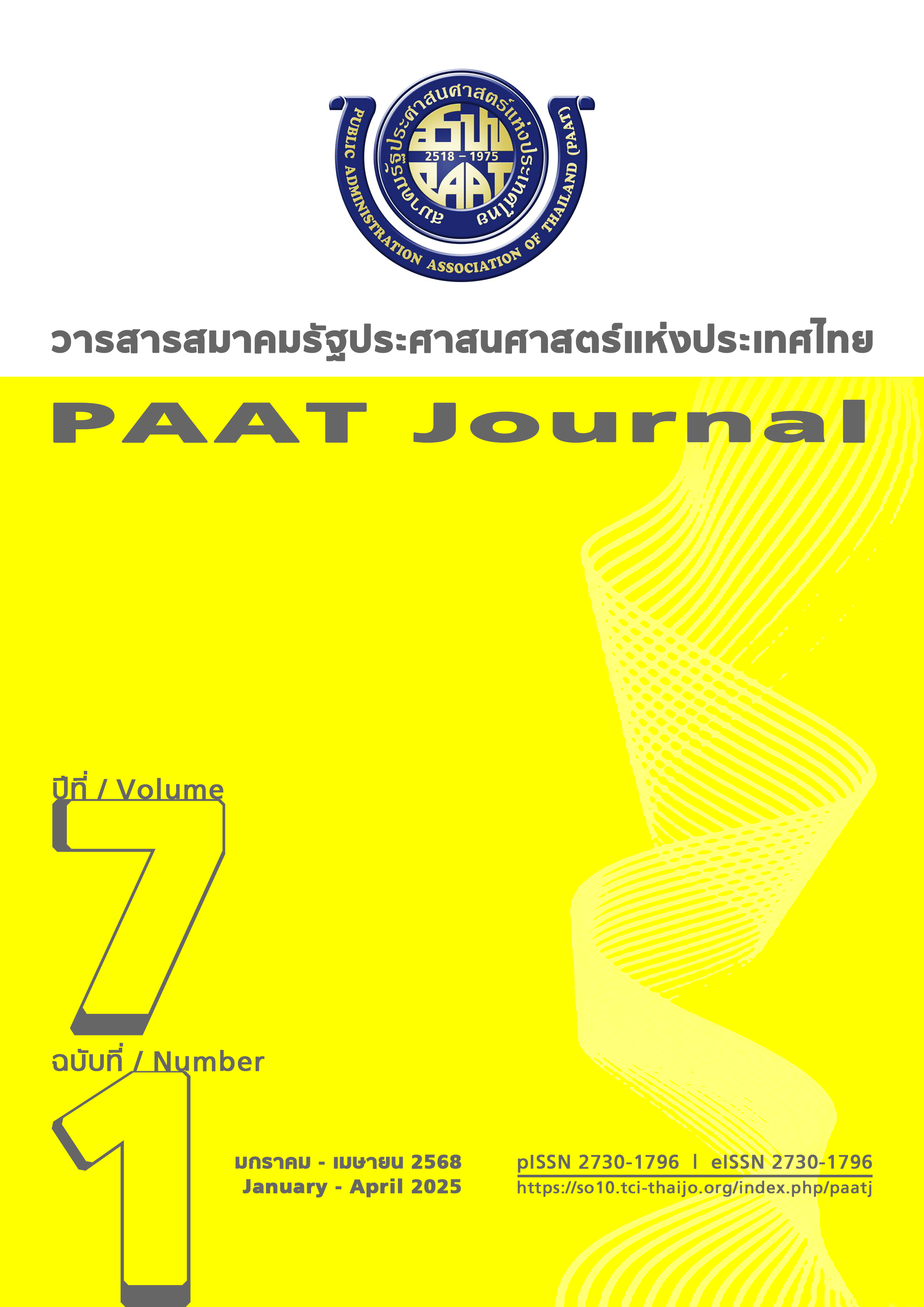Guidelines for Collaborative Development in the Domestic Production of Military Equipments for Small Military Units A Case Study: 5th Special Force Regiment
Keywords:
Partnership Building Cooperation, Creating Innovation, Military Efficiency, Defense Industry EcosystemAbstract
The objective of this research is to study the development of collaboration in the production of military equipment for small military units within the country, using a qualitative research approach. Data was collected through interviews regarding the development of collaboration in the production of military equipment for small military units within the country. The study's findings, analyzed through content analysis and thematic analysis, aim to develop practical collaboration strategies.
The research revealed the following that 1) Identification of the types of military equipment needed by small military units and deemed necessary for in-country production. Most of the identified equipment is essential and urgent for tasks or missions related to actual operations, where there is a shortage or insufficiency. Examples include night vision goggles, communication systems, etc. This also affects the equipment used for training in preparation for actual operations. 2) Assessment of the potential and challenges in the technological and engineering aspects of military equipment production in Thailand. Thailand possesses resources or raw materials that can be used in military equipment production through processing or transformation using technology. However, due to cost constraints and lack of government support, production quality tends to be compromised. Another significant challenge is the absence of standardized international equipment standards and 3) Examination of the level and directions of collaboration between the government and private sector in the production of military equipment within the country. The study found that the three main entities involved, namely security agencies, industries, and academic institutions, have a somewhat superficial relationship. Collaboration mostly occurs on specific occasions and is mainly related to public relations or civilian business-related activities. Additionally, limitations in communication and resource sharing exist due to differing goals among organizations and institutions.
References
Ansell, C. & Gash, A. (2008). Collaborative Governance in Theory and Practice. https://www.researchgate.net/publication/31311629_Collaborative_Governance_in_Theory
บดินทร์ สันทัด. (2560). การประยุกต์แนวคิดการแข่งขันสะสมอาวุธของ Samuel Huntingtonเพื่อวิเคราะห์ความมั่นคงระหว่างประเทศในภูมิภาคเอเชียตะวันออกเฉียงใต้. [วิทยานิพนปริญญาเอก คณะรัฐศาสตร์]. มหาวิทยาลัยธรรมศาสตร์. https://so04.tci-thaijo.org/index.php/ndsijournal/article/view/94836/74121
ธนินท์รัฐ สิทธิเวชธนาศิริ. (2564). การศึกษาการเพิ่มขีดความสามารถด้านวิทยาศาสตร์เทคโนโลยีและนวัตกรรมของอุตสาหกรรมป้องกันประเทศ. https://nc.rtaf.mi.th/images/pdf_research61/research64/5.pdf
อนุชา เครือประดับ. (2561). อุตสาหกรรมป้องกันประเทศ 4.0. https://awc.rtaf.mi.th/images/File/AWC_Journal/awcjournal_3_Final_V2.pdf
ชัชพงษ์ พันธุ์พยัคฆ์. (2565). กลยุทธ์การพัฒนาอุตสาหกรรมป้องกันประเทศของประเทศไทย. https://so03.tci-thaijo.org/index.php/JLGISRRU/article/view/260825
Downloads
Published
How to Cite
Issue
Section
License
Copyright (c) 2025 PAAT Journal

This work is licensed under a Creative Commons Attribution-NonCommercial-NoDerivatives 4.0 International License.



